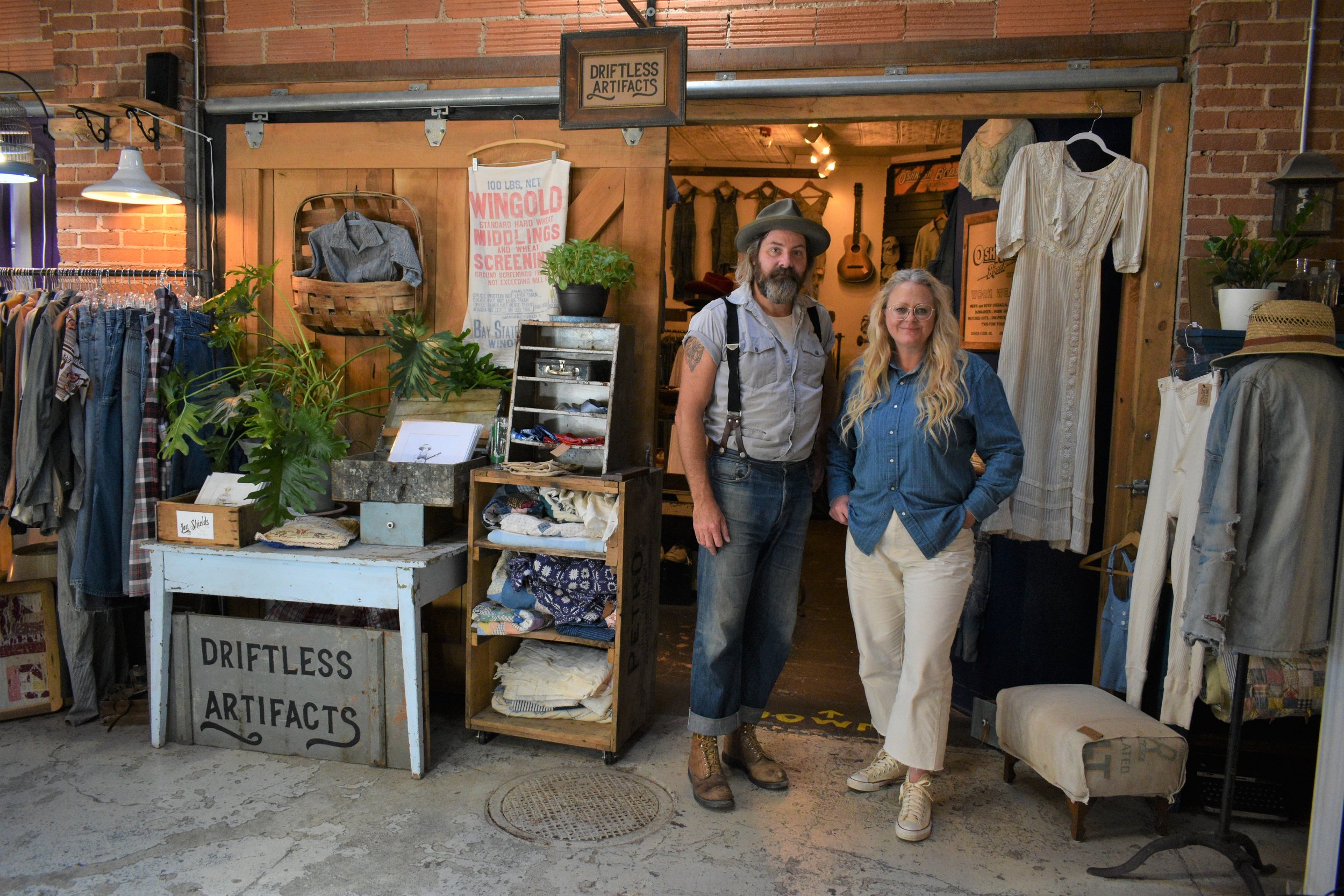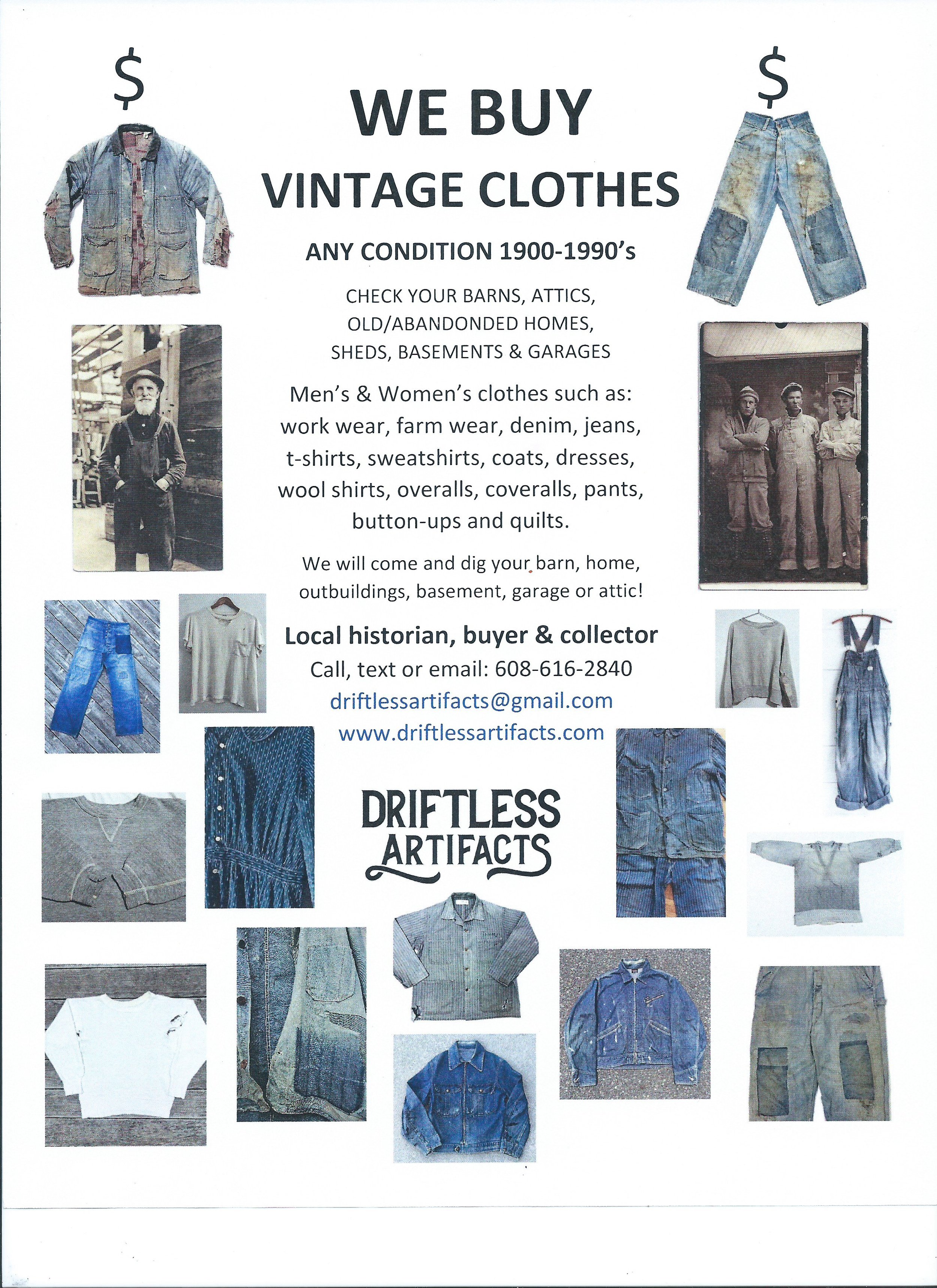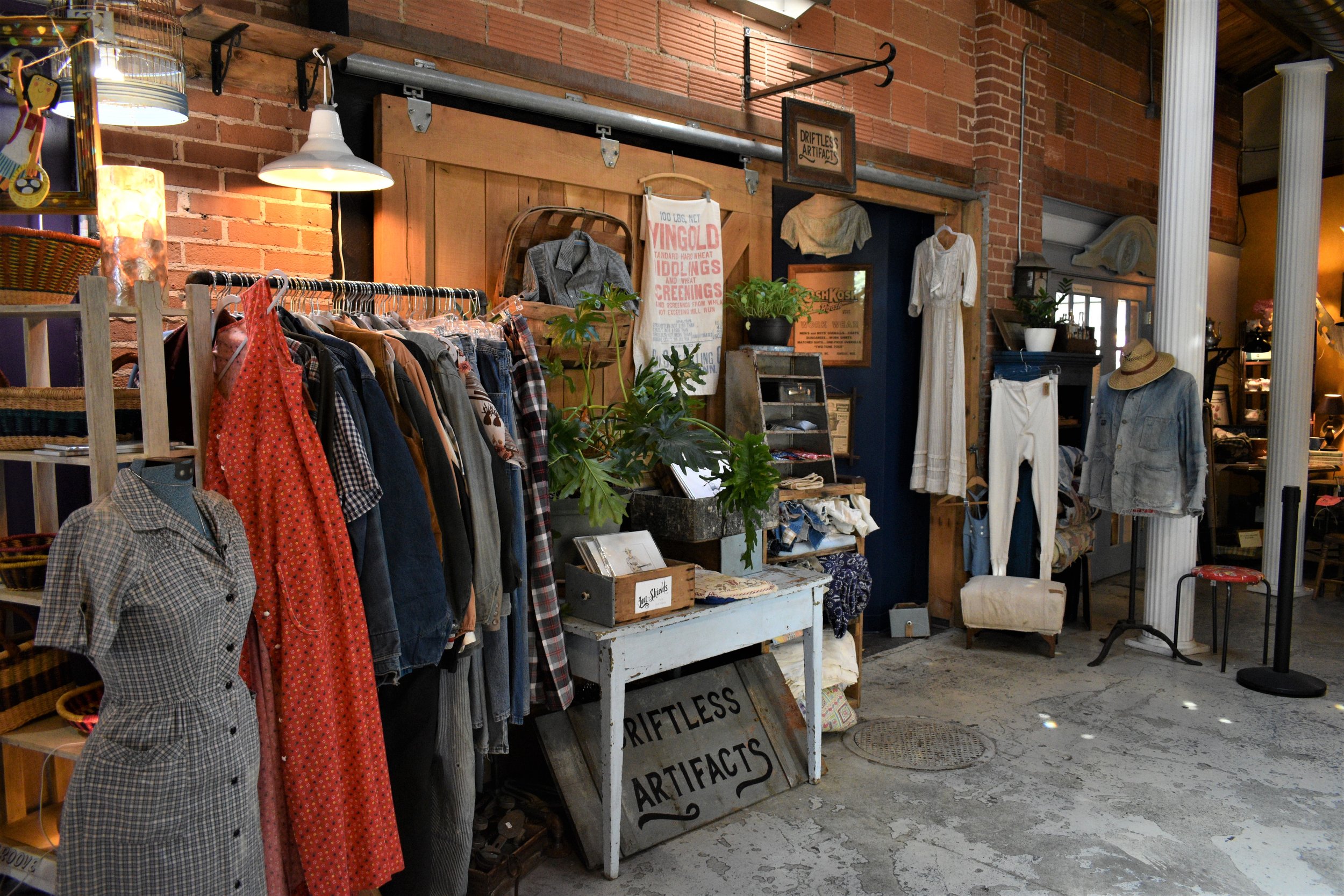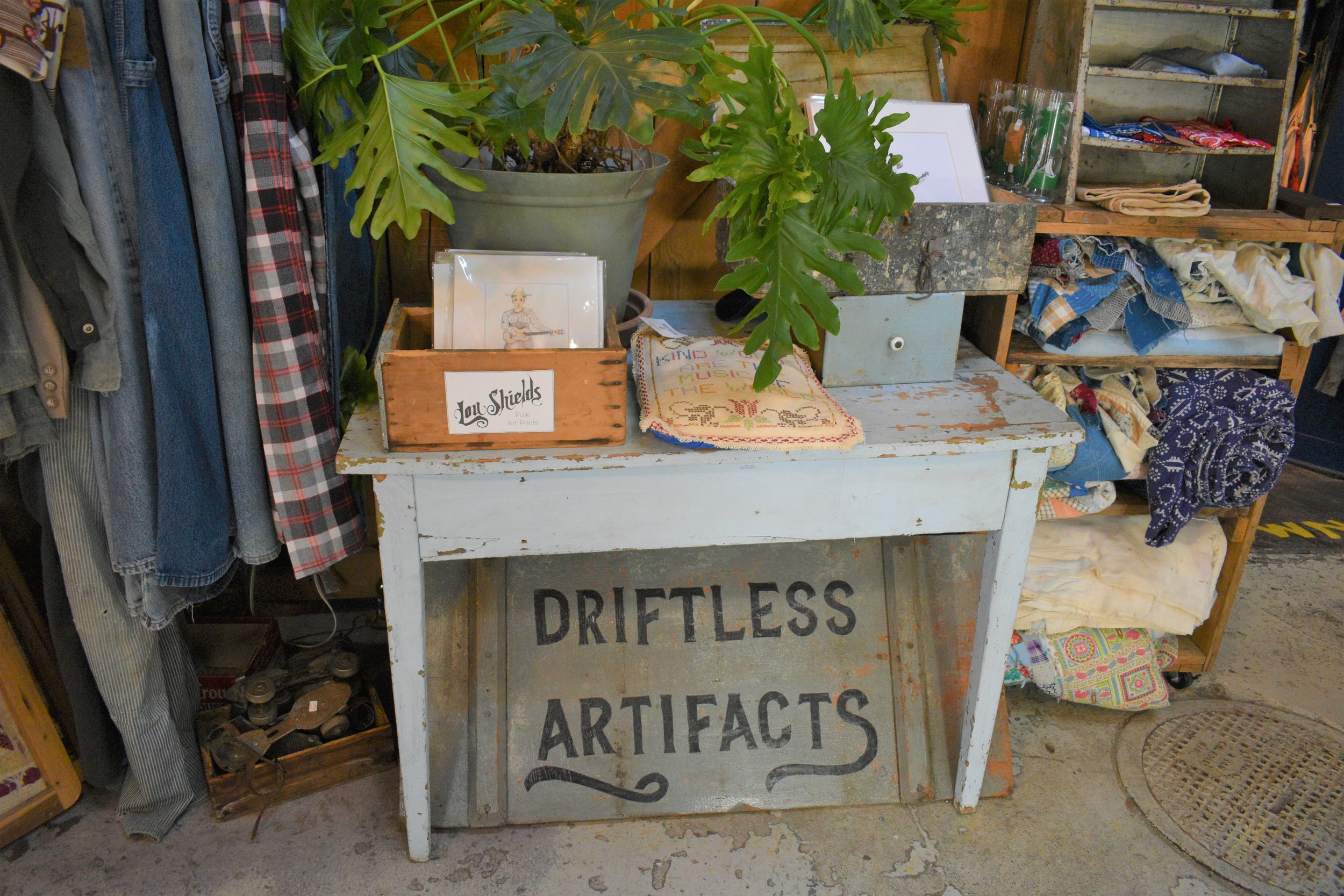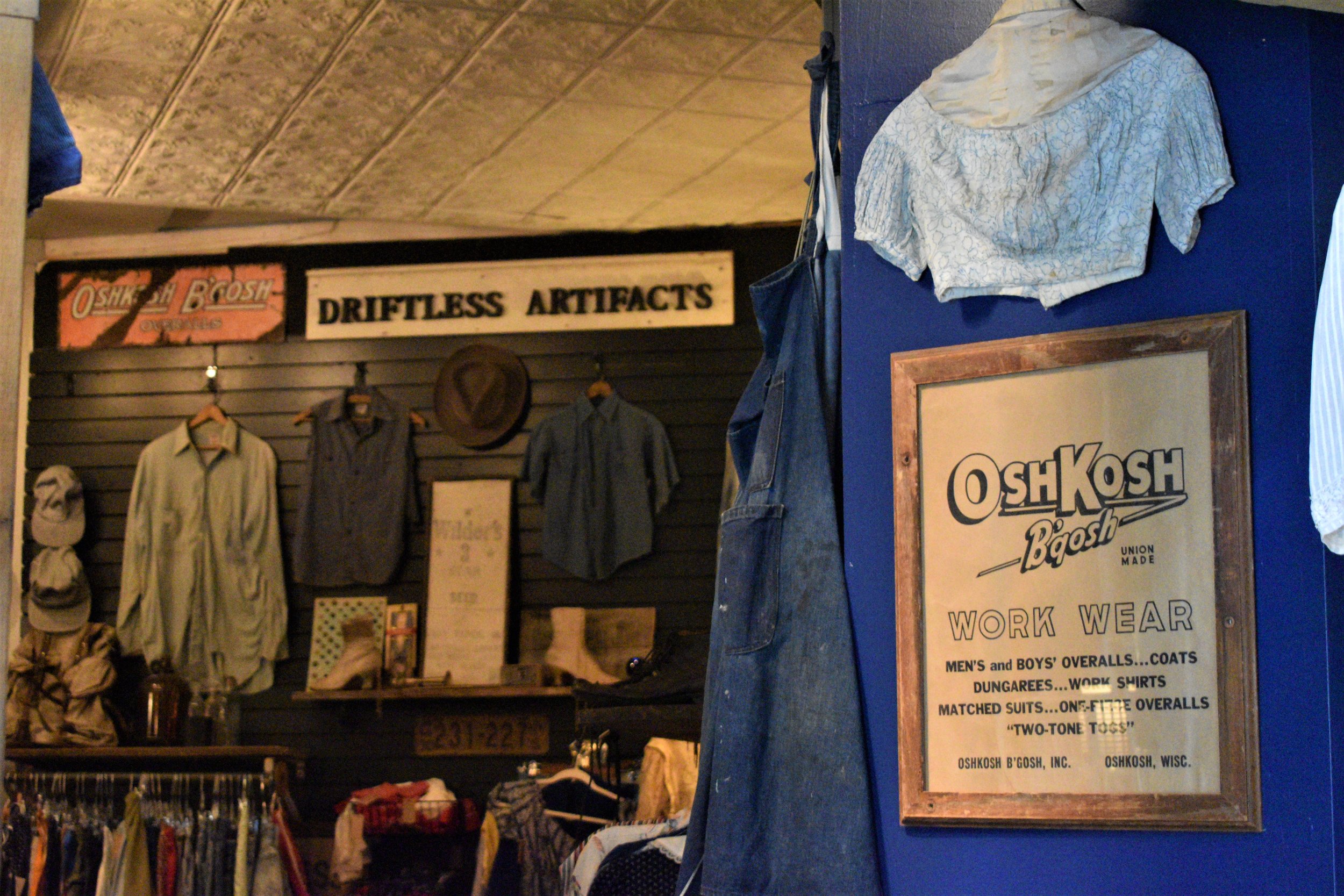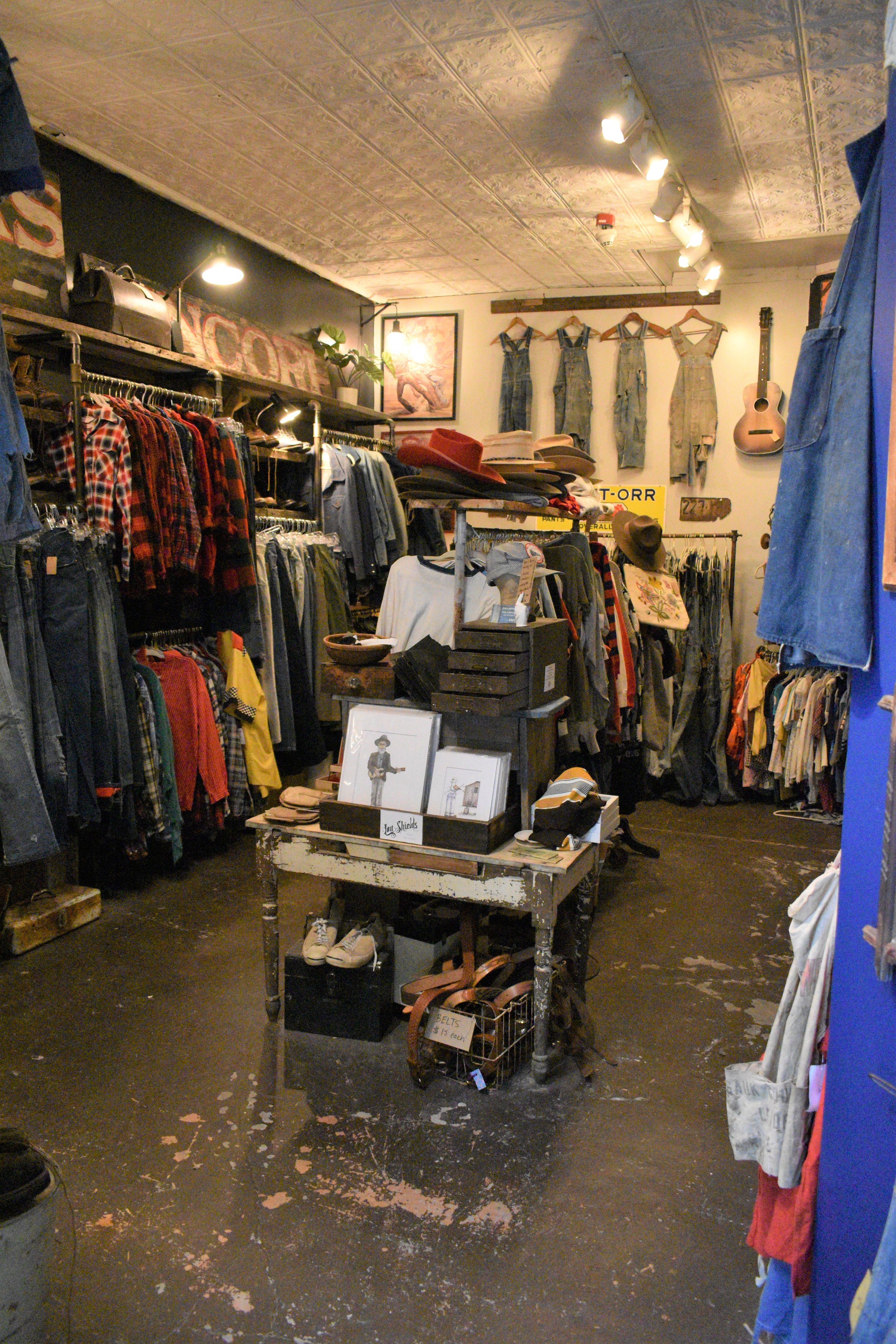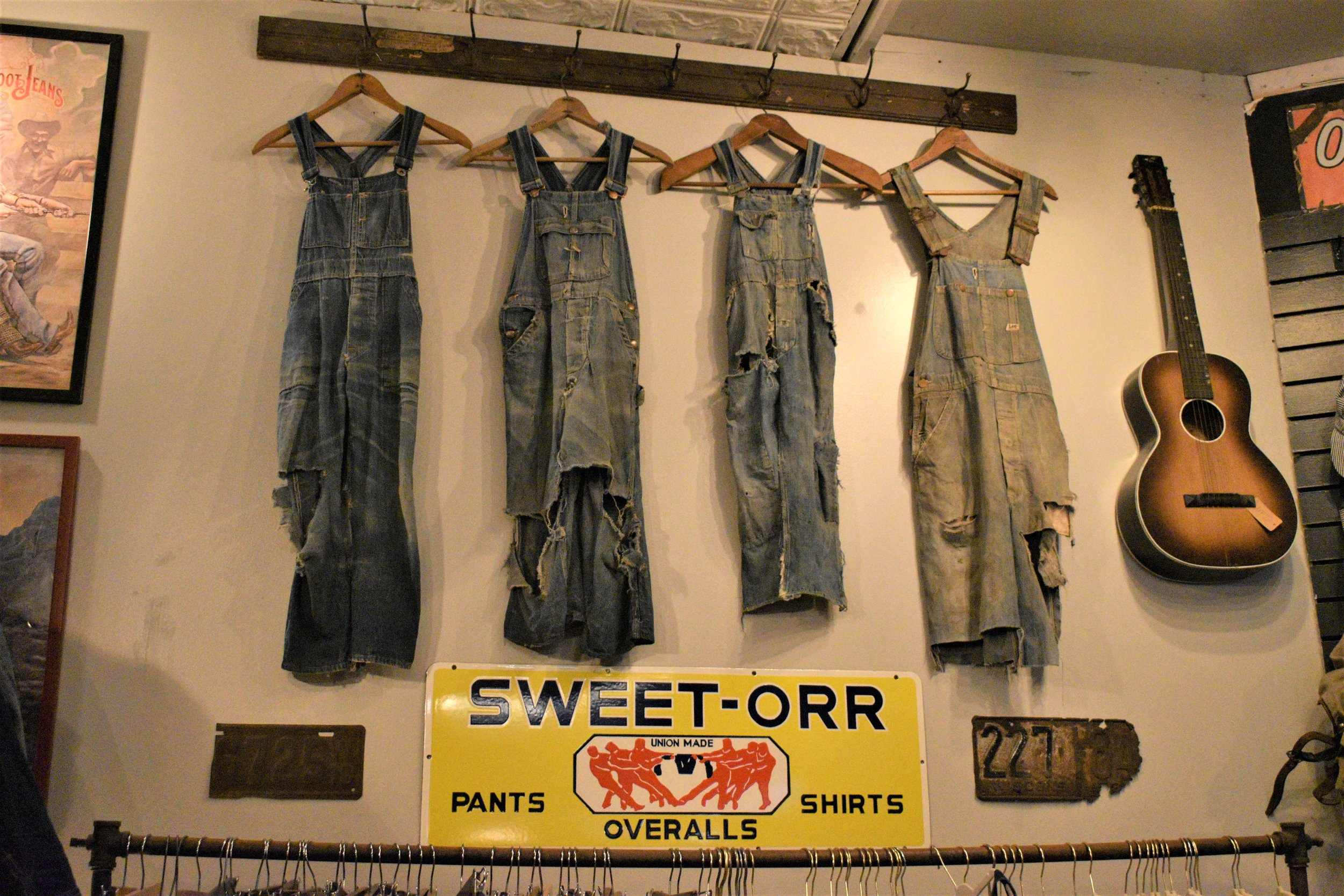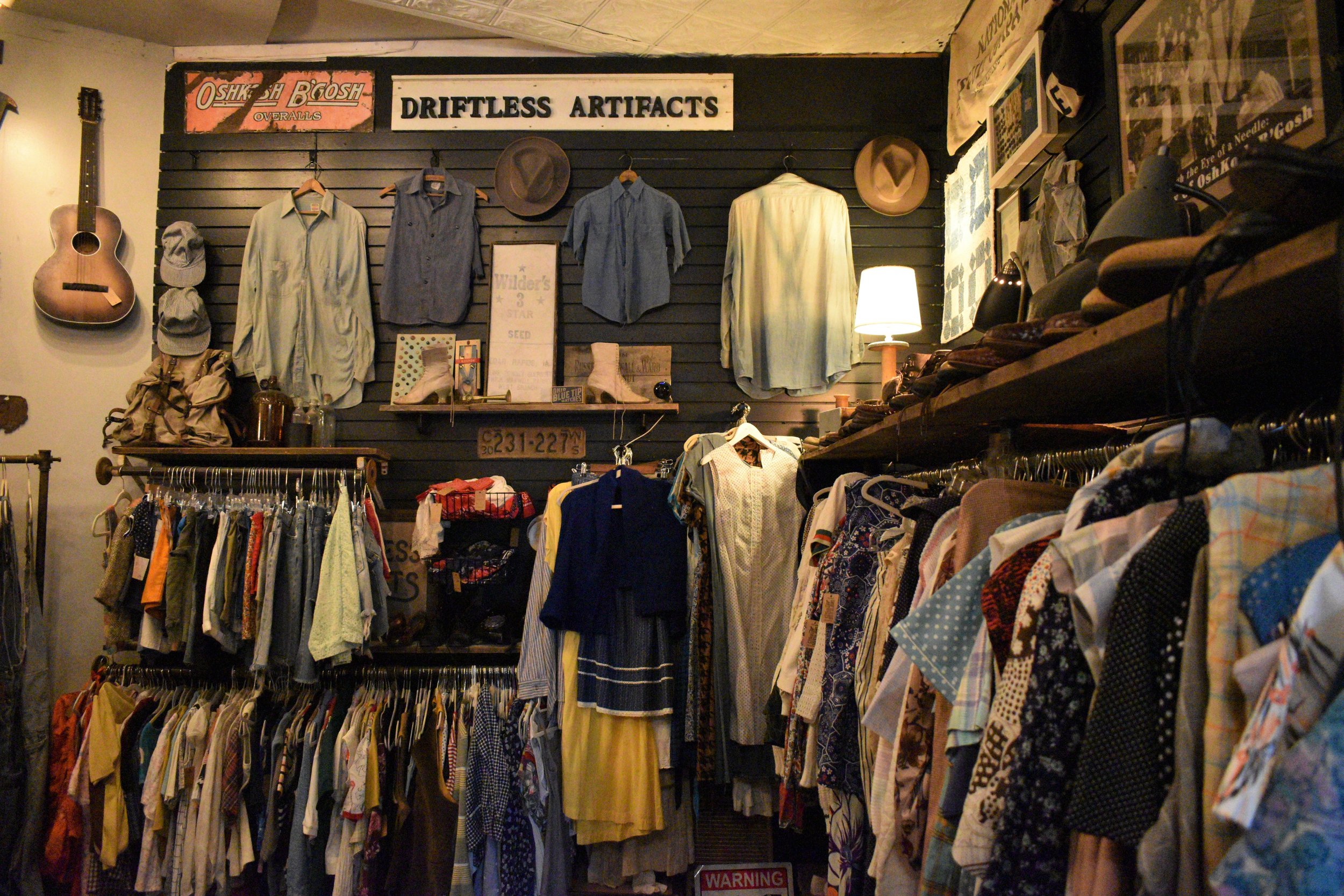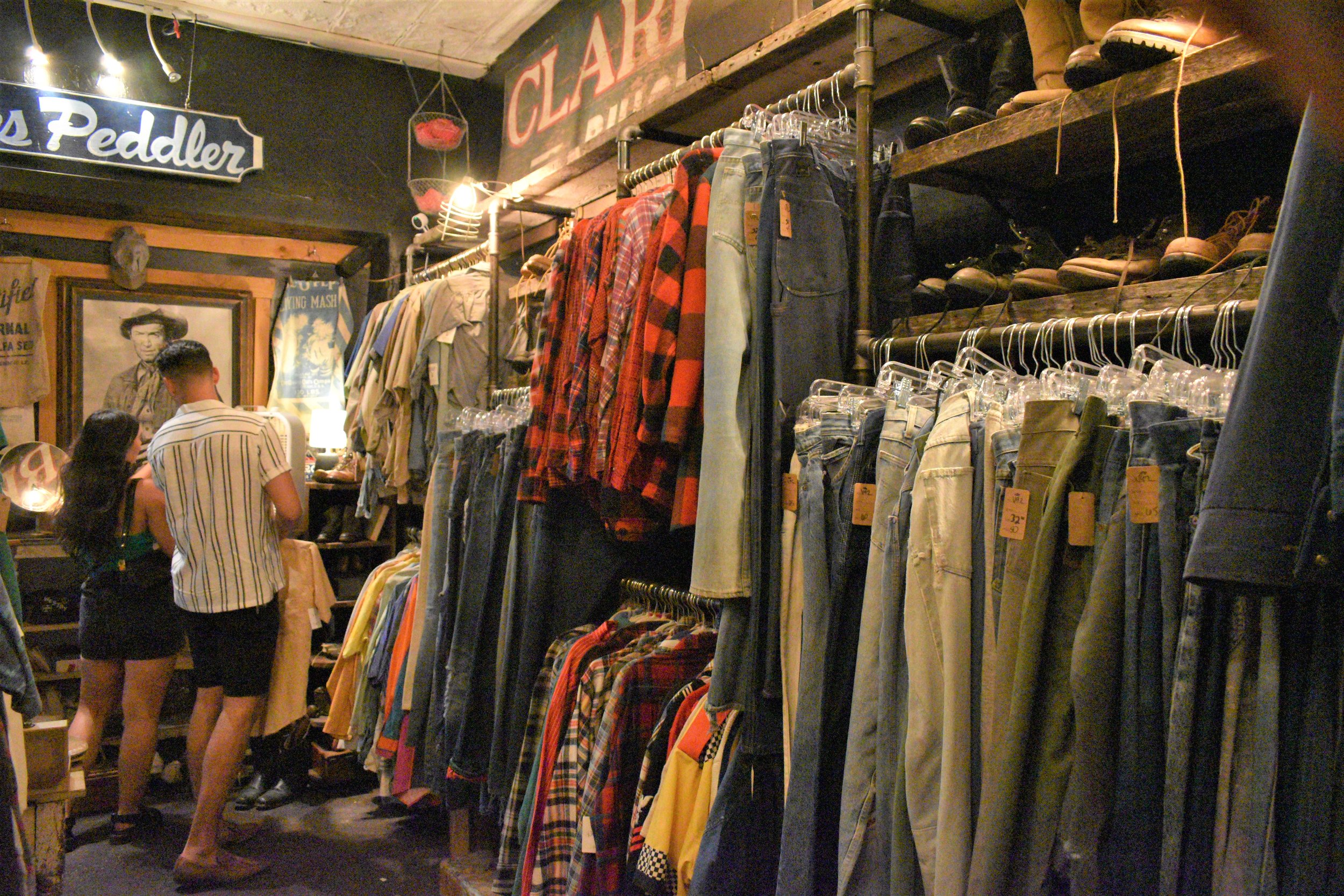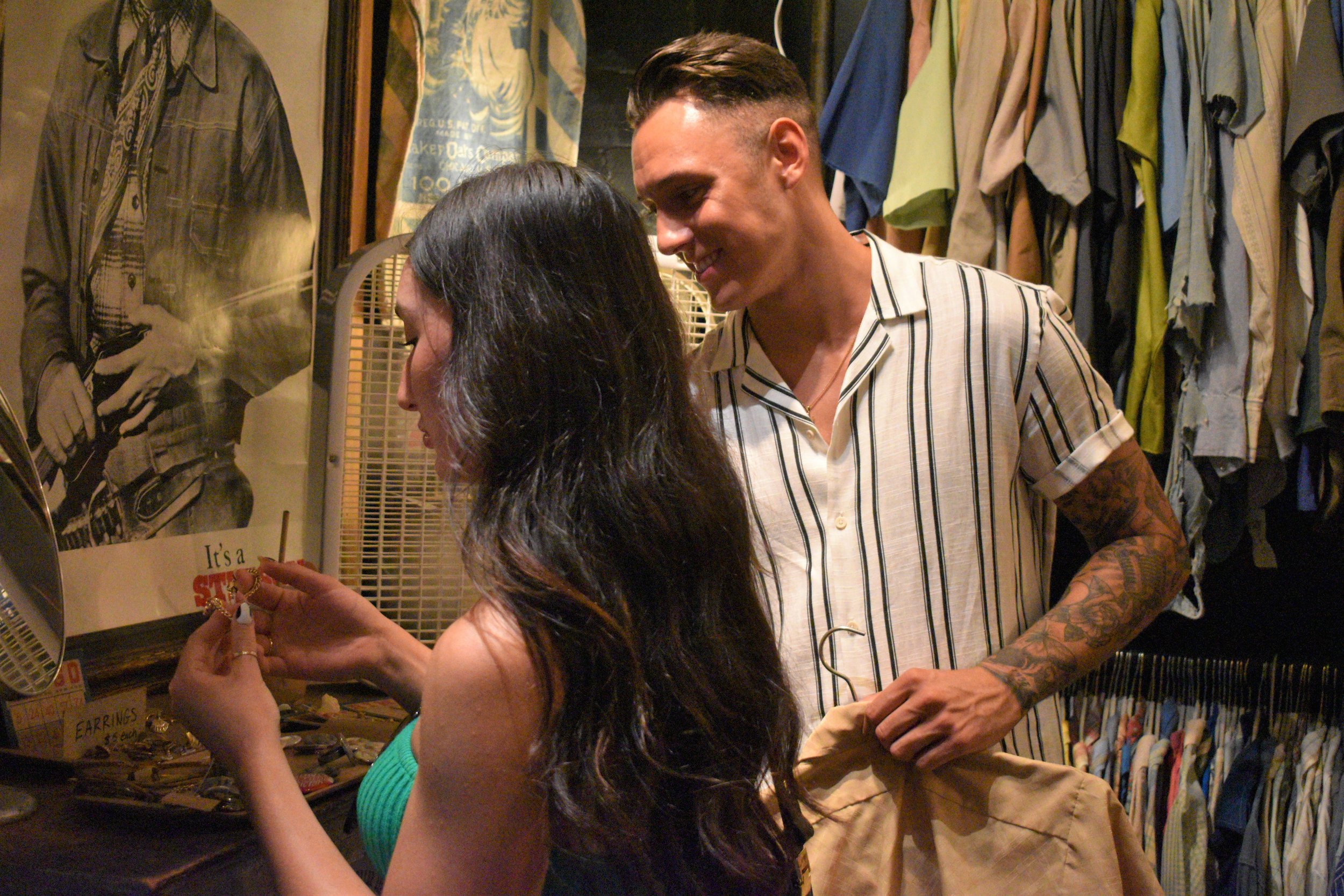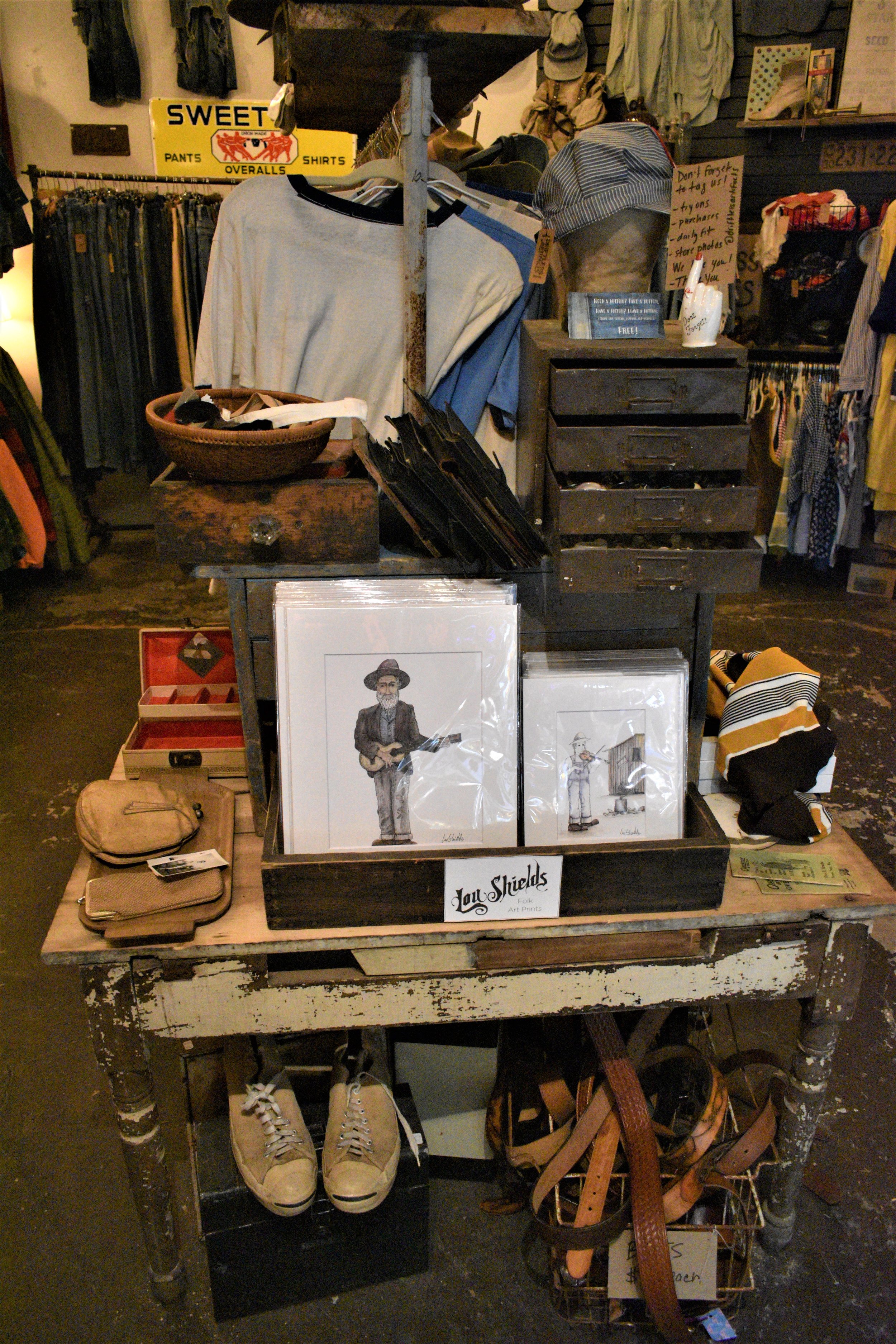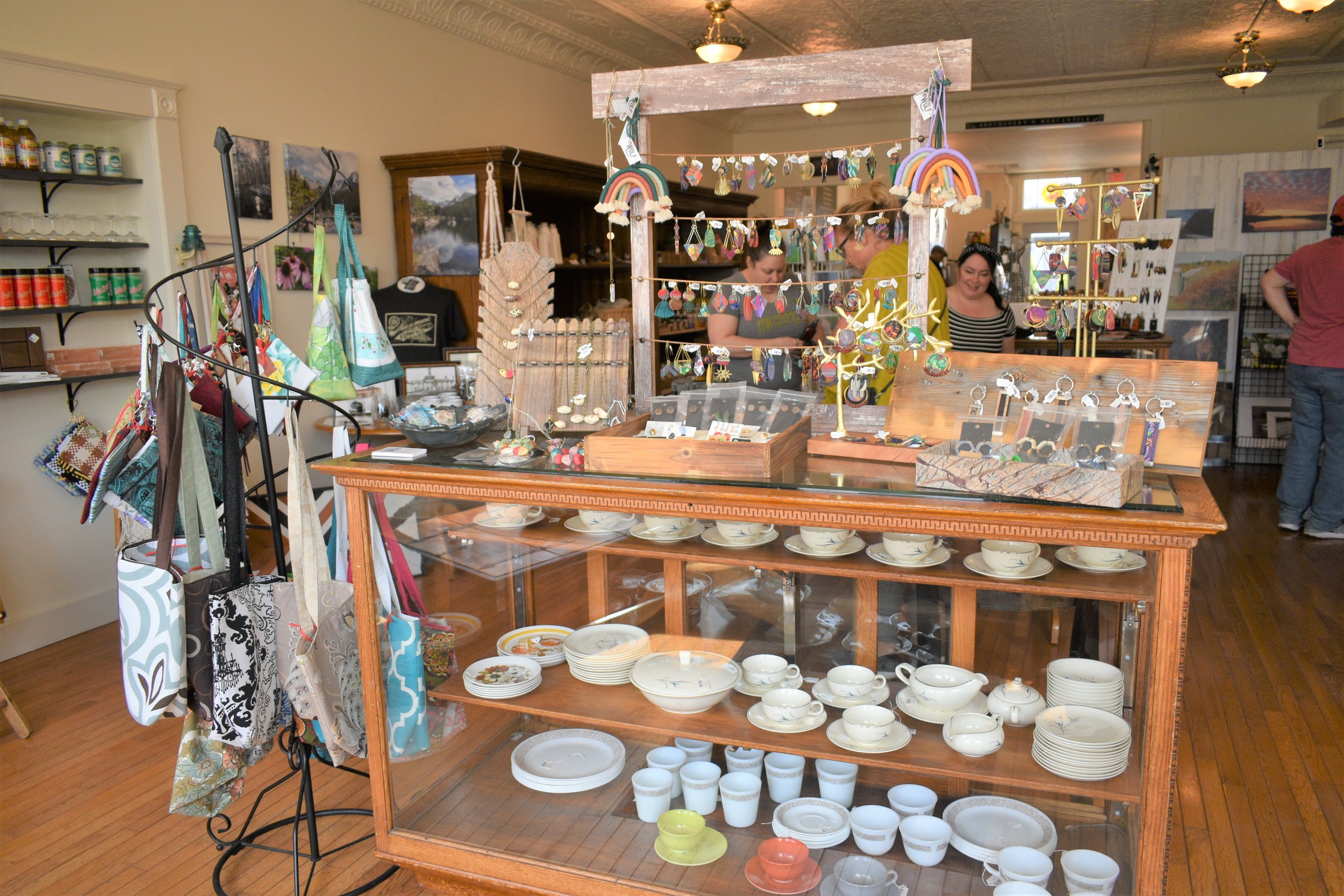Driftless Artifacts: a vintage clothes shop in Viroqua
Back in March of this year, Stacey Roou with the help of her husband Folk musician and artist Lou Shields, set up her shop Driftless Artifacts inside the Viroqua Public Market. Roou’s shop is a walk back in time, featuring vintage clothing from the turn of the century through the ‘90s.
Roou stated that she has had her business Driftless Artifacts for four years, and now is able to offer a unique clothes shopping experience in a brick-and-mortar setting. “We’ve always had a love and a passion for relics from the past,” Roou said. “We have an off-grid cabin and an on-grid cabin in Viroqua that we had to decorate with antiques. We just love things from the ‘30s, ‘40s, and ‘50s.” Roou and Shields started getting into understanding more about vintage clothes. Once they started learning, they fell in love with it and as time went on, they became almost experts at understanding the value of items and where to find them, and ultimately, how to sell.
Roou said that opening the shop has been a great benefit for her, seeing she also holds down a full-time job. “A lot of successful vintage sellers will sell online and I just don't have the daytime hours to dedicate to it. So, I love the picking aspects and love bringing things to people who want to buy vintage clothes. This is a great outlet.”
Two years ago, Roou had reached out to Rachel who runs Main Street Station, in which the Viroqua Public Market resides, and asked Rachel to let her know when a space became available. Finally, Rachel reached out when there was a vacancy in the spot Roou wanted. The rest is history (pun intended).
“We were really excited. I love the building. It's a 1920s car sales and repair building. The spot I have is like a bay that they would roll a car in to repair it. I can imagine like the cars from the 1920s being in this building. So, I love the space. The concrete floors, high tin ceilings, you know, just matched with my aesthetic,” said Roou.
The work began and the couple spent about a month building out their shop. “We like to say I'm the one with the ideas and then I always source kind of where we're gonna get the supplies from, and then my husband Lou is very talented when it comes to building things. He kind of brings it to life. I mean we do it together but he brings it to life with his tools and mechanical ability. We're a good team.”
A little bit more background on Driftless Artifacts- Roou started buying vintage 20 years ago. Roou said that she sources her vintage clothes by working with communities. “I get the word out that I’m a picker of vintage clothes, and they tell their parents or their grandparents or their neighbors and then they give me a call. So, I either go out to their house or meet them at a mutual location and negotiate.” Roou stated that she has made some great friends along the way. “Some elder members of our community will call me back again and again and again, if they're purging a large family estate and so I've been able to get a lot of my best pieces that way.”
Estate sales are kind of, as she put it, her supplementary source, but acknowledged her main sources are directly from the people, an owner (of vintage clothes), somebody who is looking to downsize, or somebody who has a barn or a building that holds the kind of clothes that nobody wears anymore.
I would imagine when Roou is meeting these people on a real human level, a personal level, that she comes across some interesting stories. Roou refers to this as, “stories behind the objects”. “We had one gentleman in Highland, Wisconsin, who I think we met maybe four times. His mother was a heavy clothes buyer and had held on to them since the ‘40s and ‘50s. She had an entire three bedroom, two story house filled with clothes, many that she had never worn before. So, we were able to do I think four different picks on that one estate. Actually, he had reached out to me before she passed away because she was downsizing. We probably spent four hours every time we were with him. We were able to get to know him and get to know his story and learn about his mom. There were some pretty sentimental pieces that we talked a little bit further about. Instead of more buying in bulk, we bought some of the special pieces and then he would tell us a story like, ‘this robe I wore in high school’ or whatever.” Roou said it is all about that “human connection” adding, “It's kind of learning about the provenance of a garment.”
Roou shared another favorite pick of hers with a man named Charlie from Richland Center, Wisconsin. Roou stated it was beautiful to see the clothes because the clothes were from when they were children to adults. “He had four brothers, and his parents had siblings who also lived on the farm. You would see the different generations in the clothes that I was getting. You can see the different overalls that are size 38 are grandpa's and all of the overalls that are size 32 were his. The smaller sizes were the kids or the grandkids. These were 1930s clothes, and they held on to them for 90 years. It's almost like you're part of their history, their family history, and to keep that going is really exciting to me.” Roou and Shields pointed out that the clothes even had names written on the inside. Both feel a great respect for those that wore the clothes and feel they are carrying something special on a little longer, celebrating the lives of the family.
I asked Roou, when buying peoples clothes if she found it gave them a feeling or sense of happiness knowing that they were going to someone that appreciates the clothing, and maybe willing to share the story behind a certain piece. “So yeah, absolutely. I mean, vintage clothes, a buyer like me, I buy wholesale or a seller like I would sell retail, takes a special person. Not everybody likes vintage clothes. You'll see some people who are settling estates, they sometimes burn the garments. We've been to homesteads where they say they just burned everything in the barn, they'll throw it away, or they will donate it to a thrift store. If you donate most vintage clothes to a thrift store, it sometimes ends up in a landfill or a rag kind of wholesale because there's tears or stains on clothes. So, they do feel a lot of relief because then they see the clothes are going to go on to someone else who's going to appreciate them.”
Roou and Shields also love the materials that were used in vintage clothes because more “earthy and organic” materials were used. Shields noted that clothes are produced today via mass production, using the cheapest materials to make the biggest profit.
“There's something called fast fashion. Fast fashion is what you would find today at the mall. Fast fashion is using low quality goods. They're oftentimes paying their workers really low salaries. It could be based on like per garment they're making, you know, cents on the dollar per garment and trying to push it all out. As a society, we want our clothes cheaper, that's pushing the industry to make things cheaper,” said Roou.
Selling clothes from the 1900s through the 1990s, Roou said between those eras, most clothes were made in the USA, sometimes they were hand stitched, sometimes sewing machines were used, and stressed there was attention paid in producing quality garments overall. “We just appreciate seeing the stitching. Another thing we love is not throwing things away if they don't fit or if they have a tear. I've always been a big thrift store shopper, all of my kids’ clothes are from thrift stores, all of my clothes are from thrift stores. When I want something new, I will go to a thrift store to buy it instead of fast fashion. I like being able to repurpose garments. With vintage, it's going from one home to another home. And if it tears along the way, somebody's making a patch. If something is gone beyond repair you save that fabric to mend something else. I have huge piles on my sewing table of 1930s and 1940s denim, so if I get a pair of pants or overalls from that era, I can use those scraps.”
Roou said she has picked up sewing over the last few years with a sewing machine and admits she loves it. Shields, in turn, picked up hand stitching mending his and Roou’s clothes.
Looking to expand their networking, Roou and Shields will be traveling down to Durango, Colorado for the first Durango Vintage Festivus, September 30th- October 2nd. An exclusive vintage clothing event, the fest is being held by Brit Eaton. Eaton has gained popularity and fame finding old Levi jeans and currently owns all the oldest Levi's in America. “He goes into mines, and he finds vintage Levi's there,” exclaimed Roou. “The thing about mines, they don’t have the moisture to rot a pair of pants. So, he goes in there and finds Levi's from the 1870s and 1880s. When Levi's first came around, he's seeing Levi's from just a few years later, and they're amazing, like artifacts. They're museum quality pieces.”
Roou and Shields will be joining Eaton and other sellers from across the United States who are into the old vintage clothes and denim. In addition to attending a huge vintage auction, Shields, as previously mentioned, is an accomplished Folk musician and will be performing at the festival.
Roou stressed that a lot of Instagram celebrities will be attending the event. “We're pretty excited about meeting these people who are essentially our mentors and seeing the Levi's. Who knows what's gonna happen? Maybe Jason Momoa will buy a pair of overalls from me. He's really into buying vintage clothes. We're really excited about networking. There's such a crossover though with vintage clothes and music. It's become such an amazing community for us. We get to know people from all over and are inspired by it. Yeah. Yeah, exactly. His (Lou Shields) art is inspired by it. It's the perfect blend of everything,” Roou shared.
Roou said she will be bringing her oldest pieces, Victorian blouses and dresses from the late 1800s, offering them for sale. “Our oldest pair of workwear is probably about the 1920s, and that's usually denim”.
Roou and Shields love antiques, but feel clothes are so special because they are close to someone's body and worn every day, an intricate part of who we are as people. “The clothes tell their life history. It just was such a close item of theirs and we’re able to keep that going. Shields said that buying clothes from people is more than just a transaction for them.
Roou said she and her husband get a lot of satisfaction for people who buy their vintage clothes and wear them. “Then, they'll say, they got it a Driftless Artifacts. But to say this is a 1940s dress, you know, farm dress or work wear dress or whatever, they are learning about it. They will understand the history of it instead of fast fashion. They might just hang it up in the house and enjoy it as art.”
Roou shared if you know family members that have those (vintage) clothes and they're going into a senior living facility and downsizing, or they no longer have a need to hold on to it, give her a call. “We can have the conversation. I definitely form those relationships and meet them at the point when they're ready. At least they have the awareness of my shop and they know not to throw it away or burn it. There's another option for them. Just as long as they're not getting rid of it. I'm ready whenever they are.”
You can contact Stacey Roou and Driftless Artifacts on the web at driftlessartifacts.com, on Facebook at facebook.com/driftlessartifacts, on Instagram at instagram.com/driftlessartifacts/, or call (608) 616-2840.
Also visit Driftless Adventures on Instagram at instagram.com/driftlessadventures/
Learn more about Folk musician and artist Lou Shields on the web at loushieldsart.com
Stacey Roou has had an Instagram page called “Driftless Adventures” for many years. The page created a large following of people who love the Driftless area. “I would photograph geography and geology type things, but then I also started doing amazing buildings and stuff. When I was thinking about a clothing brand, obviously Driftless is very popular, but Driftless Artifacts just kind of blended in with Driftless Adventures. So Driftless Artifacts is my vintage brand. In my day job, I'm a marketing manager. I love the ability to brand something and advertising. So, I'm taking my passion and instead of spending all my knowledge on marketing and advertising on my day job, I can do that for something that I'm really passionate about. That makes me happy.”
